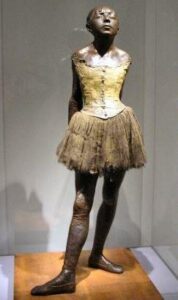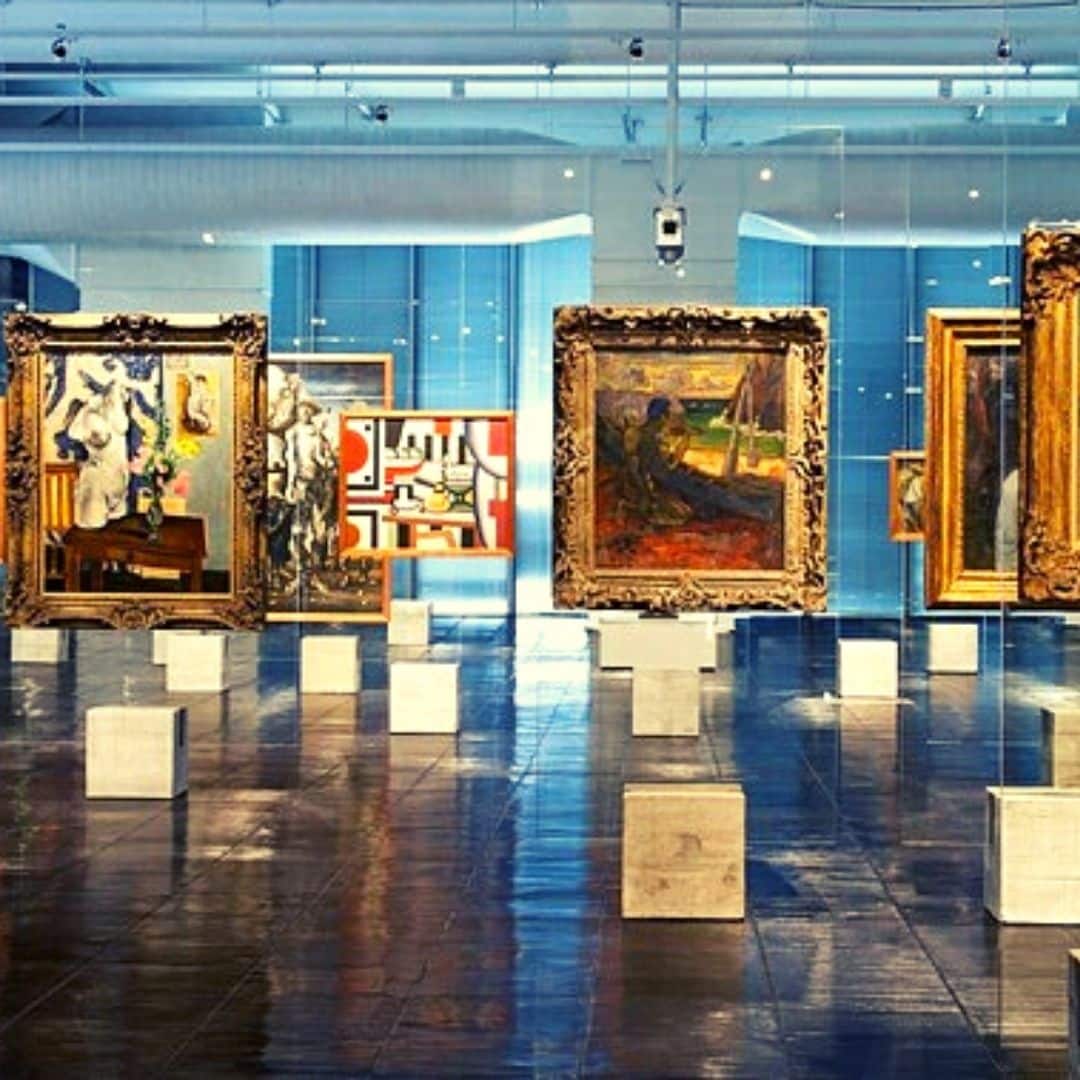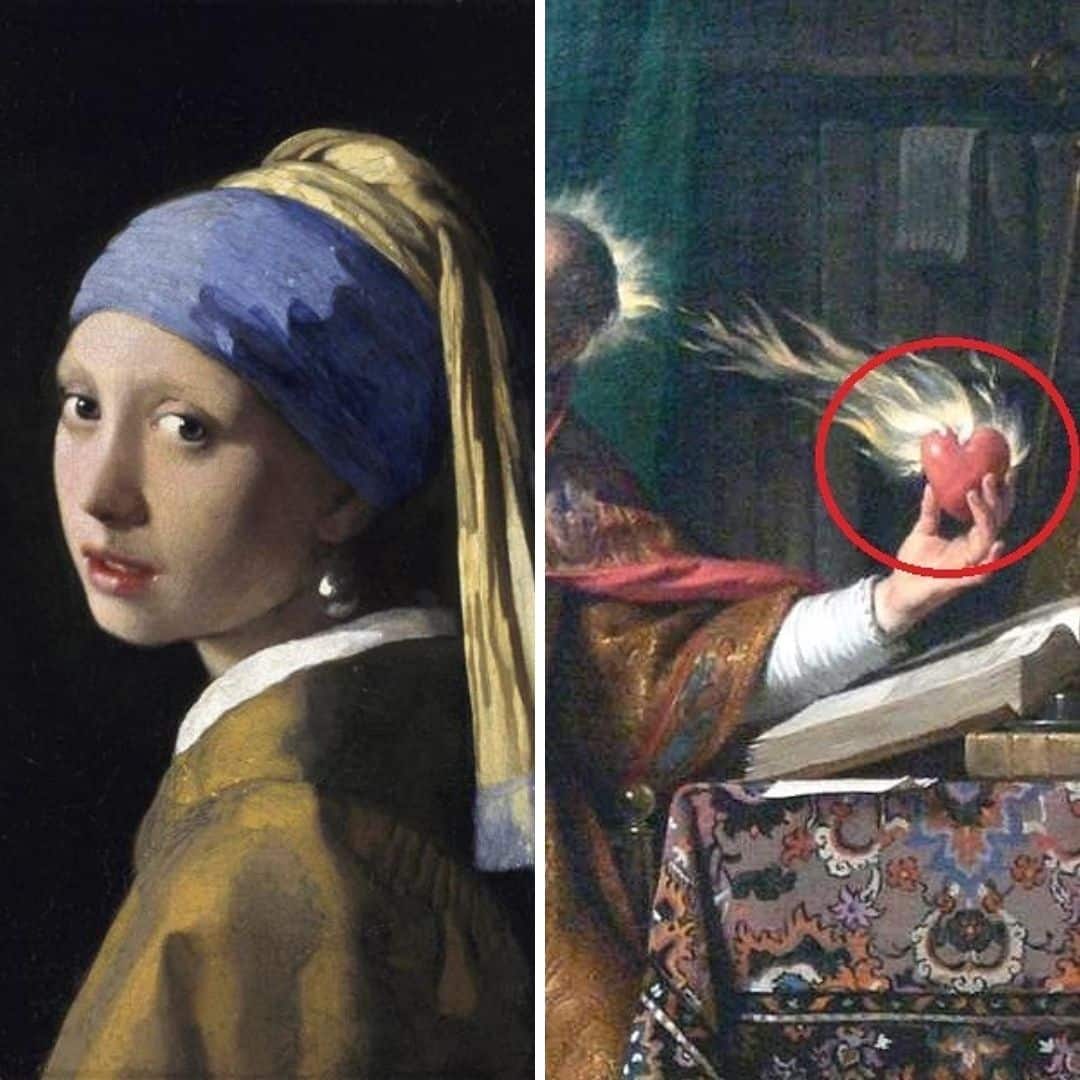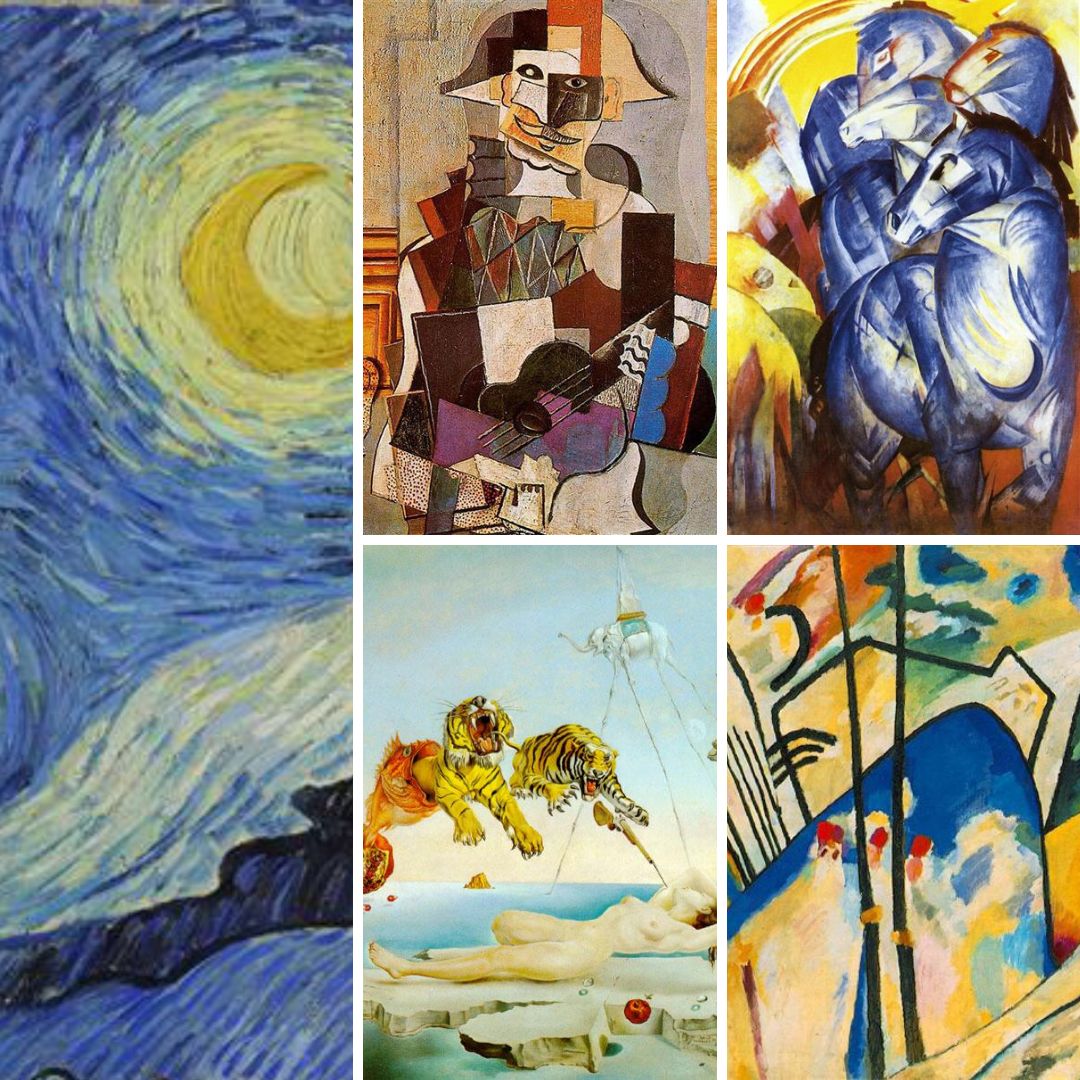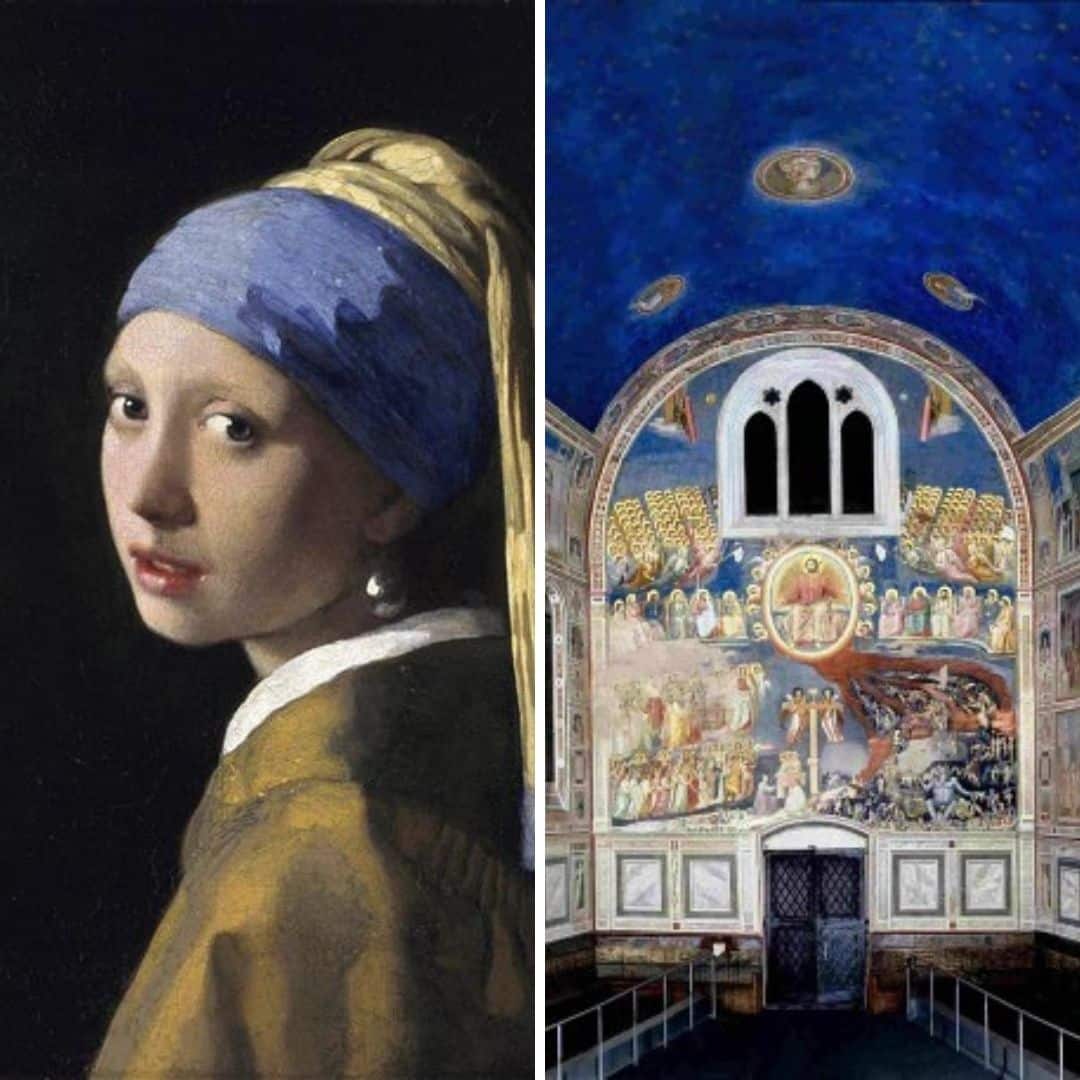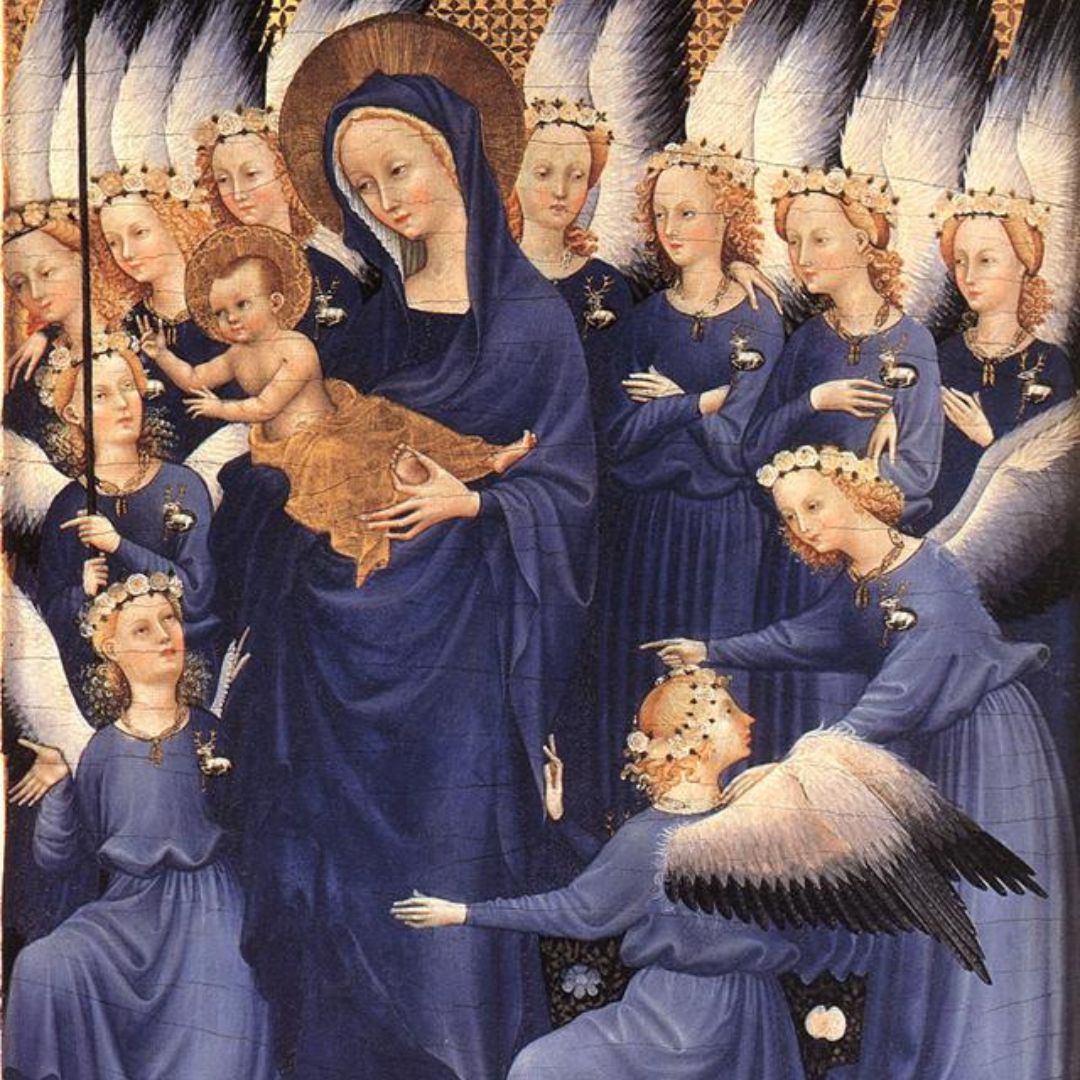Edgar Degas Little dancer of fourteen years is one of the most iconic and controversial works by the artist.
Degas
Edgar Degas was a painter, a sculptor, a draughtsman, a printmaker and a photographer.
It is above all in painting that we find most of his production and his best known masterpieces. There are about 2000 known works by Edgar Degas.
Under the stylistic point of view, Degas joined the Impressionist movement, absorbing notions related to the treatment of light and colour, but he did not follow some of the outstanding features of this movement in many of his works.
For example:
Outdoor painting: Degas did not paint outdoors and rarely painted landscapes. The scenes that occupy his works are fundamentally interior scenes, depicting the customs of the time.
Absence of drawing: Degas was also master at the art of drawing. There are numerous sketches and drawings and in some of his paintings, the drawing is very clear.
He self-entitled himself as an independent artist and this is perhaps the best word to characterise him. Let’s look at some key points for the understanding of the work of Degas.
Ballerinas
A central theme in the work of Degas. He was a frequent visitor of the Opera of Paris. The scenes related to ballet occupy most of his artistic production.

Not limiting himself to the stage scenes, Degas paints rehearsals, dressing rooms, entrances, using innovative angles and perspectives.
Details of intimacy and the effort required of the young dancers appear particularly in the artworks dedicated to this theme.
Some of the works dedicated to this theme
Degas – Little dancer of fourteen years

Source: Wikiart
Little dancer of fourteen years is one of the most iconic and controversial works by Degas, presented in the Exhibition of 1881.
It still constitutes an immense innovation in sculpture, when related to its time.
The statue was originally:
- made out of wax,
- with natural colouring,
- real hair,
- and dressed in a ballerina costume,
- with a tulle tutu and real ballerina shoes.
It includes aspects of hyperrealism.
Using various materials (fabric, wax, hair) it is an important milestone in terms of artistic achievement and precedes future movements that will affirm themselves posteriorly.
It was later cast in bronze, thus we may find several copies in important museums throughout the world.

